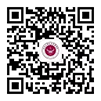Ⅰ.Course Introduction
Understanding human existence and the world is broader than scientific comprehension. In every culture and moment of history, expression of the human experience is based as much in literal and verbal discourses as it is in the arts. Visual arts, music, dance, drama, poetry, and literature have provided imagery to document, explore and understand life. The symbolic and multiple possible meanings conveyed through both viewing and creating art offers enormous space in which imagination and creativity can be cultivated for knowledge.
A guiding question throughout this course is, “How do the creative arts increase our ability to know more about the world, others, and ourselves?” Beginning with the roots of art expression in ritual settings offers an approach to seeing art as innate to the human experience, particularly in bringing order, making meaning and transforming the ordinary. This same urge to create allows us to appreciate the arts for expressing emotion, sharing thoughts, and reflecting on attitudes. As such, the arts serve as a vehicle for enhancing an empathic and intimate understanding of others and oneself. Engaging in creative arts offers unlimited access to unique, non-verbal, and sometimes unconscious content of human experience, thereby promoting world, other and self-understanding.
II. Teaching Achievements
The Healing Power of Art, taught by Associate Professor Li Bingyu from the School of Government, serves as the core practical component of the teaching reform project Research and Practice of Smart Teaching Models. As an elective course for social work majors, it has incorporated digital elements such as multimedia teaching materials, online discussions, and study group formation. The project employs action research to further refine the course’s digital teaching plan, applying and evaluating it in actual teaching practice.
The project has achieved innovation and breakthroughs in the following areas:
1. Integrated domestic and international literature on interactive learning along with cross-disciplinary expert opinions to optimize the existing digital classroom. By adopting action research, it establishes a theory-practice loop, ultimately providing practical and effective teaching solutions for the classroom.
2. Moved beyond the traditional single-ended digital teaching model by introducing digitized assessment methods and establishing a comprehensive theoretical framework for digital assessments. This approach aligns assessments with students’ needs and communication styles, achieving true innovation in digital learning.
3. Incorporated student voices into action research, offering new perspectives for classroom optimization and ensuring reforms are driven by student needs.
Additionally, the project’s research outcomes hold significant application value and potential for broader adoption. On one hand, these results provide a reference for digital reform in other social work courses. By drawing on this project’s experience and practices, other courses can tailor digital reforms and innovations to their specific characteristics and needs. For example, incorporating multimedia materials, online discussion platforms, and digitized assessment methods can enrich students’ learning experience and enhance classroom interactivity. On the other hand, these outcomes offer valuable insights and inspiration for educational reforms in other fields.
III. Showcase of Outstanding Student Video Works
Work 1:
Psyche's Palette
Description: We focus on the “silent majority,” challenging the stereotype that “pain stems from dramatic trauma”. Our protagonist is not a marginalized figure but an “ordinary” person—high-achieving, socially adept, and perfectly integrated into society—much like those of us swept up in the pursuit of success, gradually accustomed to the exhaustion of a fading life without apparent trauma.
Using a narrative that interweaves reality, memory, and psychological scenes, we aim to depict how, when stress and busyness become the norm, emotional collapse arises not from a single event but from the convergence of countless moments we can no longer bear.
Negative emotions are not the enemy but a signal of psychological distress and an opportunity to rekindle hope. This is not a lament for the defeated but a tribute to every soul losing color on the “normal track”, inviting you to bravely face today’s hidden struggles, embrace your true self, and live authentically.
Work 2:
Sensing Art, Healing the Soul
Description: Through filming and interviewing individuals in various art fields—painting, dance, singing, piano, and more—we explore the symbiotic relationship between creators and art, examining its dual value: not only as aesthetic expression but also as a profound healing mechanism. These healing art practices require deep perception to decode. This profound spiritual interaction enables creators to achieve self-expression and healing through artistic mediums while allowing observers/listeners to experience resonant healing through empathy.
Work 3:
The Silent Cry
Description: Centered on feminist themes, this video uses exhibition photos, theater performances, animation, and film clips to portray the psychological journey of ordinary women facing trauma, fear, and resistance. The female protagonist, triggered by subconscious memories during an exhibition, recalls past experiences of gender-based violence. Through theater rehearsals, she gradually learns to express suppressed emotions through body language, achieving self-awakening and resistance in her performance. Using collage poetry, symbolic masks, projected shadows, and other art forms, we highlight the injustices and oppressions women face in daily life while reflecting on courage, resistance, and self-healing. The fragmented structure, interweaving scenes, memories, and metaphors, seeks to evoke resonance and reflection in the audience. This film is not just a record but a voice.
Layout: Li Huan
Initial Review: Leng Yuxin
Second Review: Li Bingyu
Final Review: Huang Binhuan

